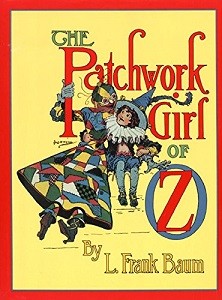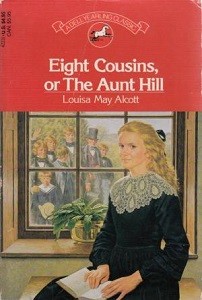
Welcome to the Horn Book's Family Reading blog, a place devoted to offering children's book recommendations and advice about the whats and whens and whos and hows of sharing books in the home. Find us on Twitter @HornBook and on Facebook at Facebook.com/TheHornBook
Don't Read These Books to Your Children! (Without a Heck of a Lot of Context)
Talking to kids about race can be intimidating for parents—particularly for white parents in the U.
But white parents need to talk to their kids about race: it's one of those necessary evils involved in raising kids who think empathetically about their fellow humans. Even most grownups aren’t aware that there is no real biological basis to race, so explaining to children the logic and history behind how we divvy up the human race into groups and pretend that means something is not easy. Nor is explaining how we are still wrestling with racism and discrimination and injustice based on those culturally constructed racial categories.
Fortunately, there are hundreds of books that can help you explain the complex social and historical forces of race and racism.
These are not those books.
 When my now seven-year-old daughter fell in love with The Wonderful Wizard of Oz, I excitedly dug out my copies of the whole series so we could read them all together. But as I was paging through the later books, I became horrified at how undertones of imperialism became explicitly racist. In The Patchwork Girl of Oz, we are introduced to the tottenhots, who are clearly childish caricatures of the Khoikhoi hunter-gatherers of southern Africa, a group who had been mockingly named "Hottentots" by Dutch colonists. Later, in Rinkitink in Oz, an enchanted prince was restored from goat to man by traveling up the evolutionary ladder, which included turning him from an ostrich into a tottenhot, “a lower form of a man,” then into a mifket (whose description of an island-dweller with a coconut-shaped head evokes images of Polynesians), considered “a great step in advance,” until finally transforming into Prince Bobo.
When my now seven-year-old daughter fell in love with The Wonderful Wizard of Oz, I excitedly dug out my copies of the whole series so we could read them all together. But as I was paging through the later books, I became horrified at how undertones of imperialism became explicitly racist. In The Patchwork Girl of Oz, we are introduced to the tottenhots, who are clearly childish caricatures of the Khoikhoi hunter-gatherers of southern Africa, a group who had been mockingly named "Hottentots" by Dutch colonists. Later, in Rinkitink in Oz, an enchanted prince was restored from goat to man by traveling up the evolutionary ladder, which included turning him from an ostrich into a tottenhot, “a lower form of a man,” then into a mifket (whose description of an island-dweller with a coconut-shaped head evokes images of Polynesians), considered “a great step in advance,” until finally transforming into Prince Bobo.Baum’s descriptions were a nod to the evolutionary racism popular at the time, a set of (now thoroughly debunked) pseudo-scientific theories that assumed human races were organized along evolutionary lines, with biological and cultural superiority advancing as skin color lightened. How many of my other favorite childhood books carried racist tropes that I wasn’t able to see at the time? The answer is, a lot of them.
Some were appallingly overt, as in Margaret Sidney’s The Five Little Peppers and How They Grew. Her ham-fisted dialogue between an unbelievably obsequious black servant, Jefferson, and the equally unbelievably innocent, pure, white Phronsie couched notions of white superiority over blacks through Jefferson’s own self-effacement: “I’m big and black and just fit to stay downstairs... I ain’t just fit for a lily to touch.”
 Others were more covert as they exoticized difference while attempting to broaden little readers’ knowledge of the world. The well-intentioned Louisa May Alcott in Eight Cousins, for example, managed to sketch a Chinese character, Fun See, so laughable and outlandish that he rivaled Mickey Rooney’s portrayal in Breakfast at Tiffany’s. Although in the sequel, Rose in Bloom, was radically egalitarian for its time in referencing a romance between Fun See and a white friend of Rose’s, we never quite lose sight of how different and out of place the Chinese immigrant is.
Others were more covert as they exoticized difference while attempting to broaden little readers’ knowledge of the world. The well-intentioned Louisa May Alcott in Eight Cousins, for example, managed to sketch a Chinese character, Fun See, so laughable and outlandish that he rivaled Mickey Rooney’s portrayal in Breakfast at Tiffany’s. Although in the sequel, Rose in Bloom, was radically egalitarian for its time in referencing a romance between Fun See and a white friend of Rose’s, we never quite lose sight of how different and out of place the Chinese immigrant is.My favorite Narnia books are also guilty of this backdoor racism, particularly in The Horse and His Boy. The land of Calormen is explored in depth, revealing a Middle Eastern–based culture that is simultaneously lazy and savage, worshipping a nightmare of a god (Tash) who turns out to represent the devil. Lewis attempts to ameliorate the last point in The Last Battle by revealing that good and faithful devotees of Tash were really worshipping Aslan the whole time, a conflation of Christianity with pure intent and Islam with devious malice that falls appalling short of the cultural relativism he was reaching for.
Even today, many books that attempt to bridge the conversation about racial or cultural difference end up focusing more on difference than on underlying sameness, a point made well by Julie Hakim Azzam in her search for books about ordinary, everyday Arab families.
Amid excellent books for kids and parents that offer examples of diversity and how to talk to children about race, the books mentioned above should perhaps be saved for more sophisticated conversations. These are the books that you should read if you want to talk about pseudoscience, like the nineteenth-century attempts to fit cultural and surface racial differences into an evolutionary ladder (which unsurprisingly placed Northern European theorists’ cultural groups at the top and the darkest-skinned human populations at the bottom). Or you could talk about the related concept of polygenism, the wholly unfounded belief that human groups evolved from different species. Or maybe you could explain internalized racism, or institutionalized racism, or structural violence.
 But if you don’t feel like unpacking centuries of pseudoscience and bigotry, you may want to give these books a pass. At least until your kids are a little older—like in college.
But if you don’t feel like unpacking centuries of pseudoscience and bigotry, you may want to give these books a pass. At least until your kids are a little older—like in college.The problem with these depictions of race is that they are insidious. They leave lasting impressions about Arabs being dangerous and evil, about blacks being stupid and servile, about non-whites being less evolved than whites. These are messages that aren’t founded in reality but in our prejudices.
In the meantime, my concerns around the Oz and Narnia series in particular aren’t going to stop us from reading them, too. But I want to raise critical readers who think through the implications of how difference is portrayed. So as we read, we will continue to talk about what was, what is, and what we can write differently in the future.
Read Carie Little Hersh's previous Family Reading posts: Reading Race and Power in Fantasy and Of Fantasy and Daughters.
RECOMMENDED
ALREADY A SUBSCRIBER? LOG IN
We are currently offering this content for free. Sign up now to activate your personal profile, where you can save articles for future viewing.






Add Comment :-
Comment Policy:
Comment should not be empty !!!